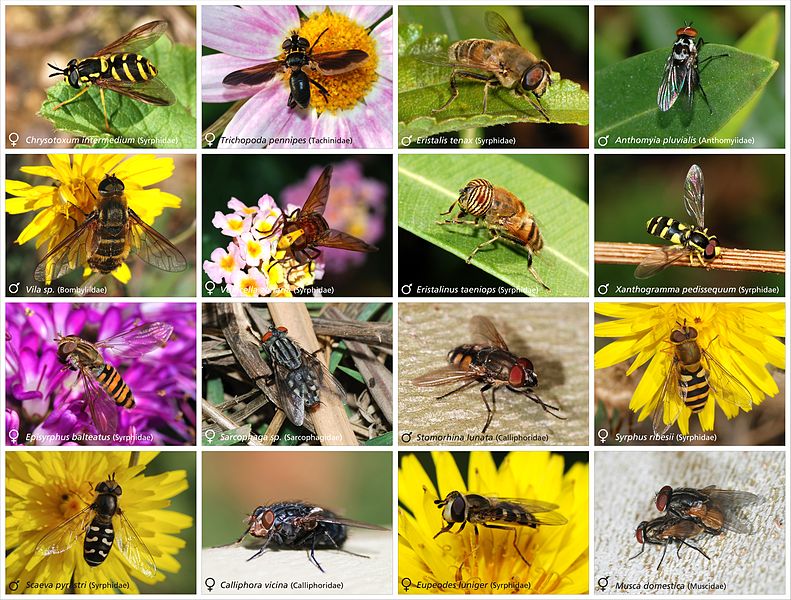10.31.2008
Spacebrain and Depression: even space travelers get the blues
>


The human mind and its moods is one of the limiting factors on space travel.
Even on the ISS, inter-crew psychological relations is a mission success determinant along with objective measures like focus and attentiveness.
How can this emerging problem be solved?
We believe through proactive awareness and neuro-intervention through situation-based games...taking it far beyond booster stage offerings.
Time will tell as consumer space takes shape, from delivery systems like Richard Branson and Elon Musk to hotelier Bob Bigelow.
Labels: bigelow, branson, musk, spacex

10.30.2008
Caltech Researchers Link Facial Appearance with Electoral Success
>

According to plastic surgeons, the mix below is the perfect face for M and W...but the mash-up is a little weird.

Star magazine
Labels: candidate, face, perfect, spezio

10.28.2008
Valproic Acid Turns Back Amyloid Formation
>


A ray of good news: the sticky substance known as beta amyloid was actually degraded in a recent UK study by Valproic Acid, a treatment usually applied for epilepsy, a disorder of the neurotransmission system.
This was a laboratory study in mice. It looked at the effects of the drug valproic acid (VPA) on the formation of amyloid beta plaques in the brains of mice genetically engineered to develop an Alzheimer’s-like condition (APP23 and APP23/PS45 mice). It also looked at the drug’s effects on brain cells from these mice, and on their ‘memory’ behaviour.
Dr. Clive Ballard, director of research at the Alzheimer's society of the UK, led the study, which now commences to human trials.
Labels: valproic

10.26.2008
U.S. Carries Out Operation in Syria
>


Roman emperor Phillip "Arabus" on Syrian 100 pound note
Links:
Assyrians
Babylonians
Achaemenids
Seleucids
Roman Syria

Pan of ruins: Palmyra
Byzantine Syria and the Muslim Conquest
Medieval Syria
Ottoman Syria
French Mandate of Syria
Politics of Independent Syria
That's a start...
Labels: achaemenids, cole, palmyra, phillip, romans, syria, u.s., umayyads

10.24.2008
Blue Flame, Genes, and Blood Pressure
>

It is theorized that humans may have the same weakness, and that hydrogen sulfide, a gas with the odor of rotten eggs, is a natural regulator of blood pressure vis-a-vis its impact on vascular tissues.
src="http://cognitivelabs.com/cognitive.js">
Labels: blue, flame, flatulence, hydrogen, science, sulfide

10.22.2008
Fly: 12X Human Speed
>


If you think your reaction time is fast, compare yourself to the bugs. Our insectoid friends are much quicker.
The fly is twelve times faster.
Swatting a fly is difficult because it has an early warning system. In less than a 10th of a second, the fly has to perceive the threat using its eyes, determine what direction it's coming from, and then make the appropriate movement with its legs so it jumps in the right direction. And all this is accomplished by a brain that's the size of a poppy seed.
They have compound eyes – instead of one lens they see through a sphere with many hundreds or thousands of eyes, called ommatidiums. Household flies, for instance, have a very well-developed 3D visual system with the capacity of seeing motion, color and pattern of objects in their environment due to their advanced compound eyes. It is now serving as a model for advanced electro-optical design.
Flies appeared in the middle Triassic. They have a symbiotic relationship with other life on earth. More than 2/3 of a fly's genes are involved in guiding cognitive function, which, along with its short lifespan and plastic adaptability, makes it ideal for structural neurocognitive research into changes from Alzheimer's and similar conditions.
The University of Arizona has published a fly brain atlas (c. 2000) using Java applets and VRML, or virtual reality mark-up language, which as of present is the number one search result for 'fly brain.'

Labels: compound, fly, nanowerk, ommatidiums

10.20.2008
Cognitive Labs APOEe4 gene research published
>

The reference is here
O'hara R, Sommer B, Way N, Kraemer HC, Taylor J, Murphy G "Slower speed-of-processing of cognitive tasks is associated with presence of the apolipoprotein epsilon4 allele." Journal of Psychiatric Research, (2008)February; 42(3) 199-204
Previously it existed in as an e-publication (2007)
Labels: apoe, apoee4, cognitive, Cognitive Labs, genes, o'hara

10.18.2008
Volumetric Laser and Light Globules
>

10.17.2008
Tomb of the 'Real' Gladiator Found
>


Along the banks of the Tiber and running parallel to an undetected portion of the Via Flaminia (Flaminian Way) a marble mausoleum belonging to Marcus Nonius Macrinus, a confidante of the emperor Marcus Aurelius, was discovered in what experts are saying is probably the most significant Roman period archaeological find in two or three decades, uncovered during the routine demolition of an old warehouse.
Note the pristine condition of the road, buried as it was, under soil and loess.

Just over a year ago, a floor mosaic of the gladiator Montanus was discovered in an estate belonging to Commodus, son of Marcus Aurelius.
Macrinus was possibly related to the future Emperor Macrinus (217-218) who was the praetorian prefect under the emperor Caracalla, but this is uncertain.
The emperor's biography presented in the histories would appear to make this unlikely, however, note he was appointed procurator of the Via Flaminia, the road running right by his ostensible relative's important mausoleum, and this could be an important clue in solving this historiographical puzzle.
Labels: caracalla, flaminia, macrinus, marcus, nonius

10.15.2008
Competing Brains: World Chess Championship
>


Defending world champion Visnawathan Anand of India and Russia's Vladimir Kramnik duel to a draw in the second game of the World Chess Championship in Bonn, Germany.
Labels: anand, championship, chess, kramnik

Cyanobacteria and Diseases of the CNS: Revisited
>


You might recall this story about the possible link between Alzheimer's Disease, ALS (or Lou Gehrig's Disease), Parkinson's Disease and 2.8 billion year old cyanobacteria or blue-green algae.
The connection seems to pivot around BMAA, a powerful neurotoxin that can impact the central nervous system (CNS) and contribute to the onset of these diseases.
A related group of researchers is coming to the perspective that a protein reservoir exists within your body, first absorbing BMAA and then slowly releasing it over years and even decades, causing chronic damage to the motor neuron system.
Scientists suggest that exposure to low levels of BMAA may be mediated by most people through metabolism or excretion. However, research also suggests that a few individuals accumulate, rather than excrete BMAA, and these individuals may be at great risk for developing ALS.
The best epidemiological data indicate that a gene/environment interaction probably lies at the roots of ALS/PDC in Guam and possibly sporadic ALS elsewhere. Some experts suspect that BMAA combined with certain metal ions can cause damage to the motor neuron system in vulnerable individuals.
A recent (2008) article profiles the bloom of cyanobacteria in lakes and ponds of upstate NY and Canada, which appears to cause die-offs of fish and fowl. One theory is that run-off of unnatural phosphorous-containing fertilizers is polluting soil, waters, and other aspects of the ecosystem and causing neurological damage. While a very extended hypothesis, the increase in these kinds of diseases since the Industrial Revolution and the rise of the chemical industry (began in Germany in the latter 19th century) suggests a possible link. Alois Alzheimer did not identify the Disease bearing his name until 1907, ALS was identified in 1861 and known as Charcot's Disease in Europe, and Parkinson's in 1817. Parkinson's is sometimes linked with neurotoxins derived from pesticides, again, another product of the chemical industry.
To complicate matters in the cyanobacteria question, other scientists have isolated a compound called nostocarboline by processing cyanobacteria intensively. This substance in early animal trials appears to function as a cholinesterase inhibitor, breaking down accumulation of cholinesterase and helping the build-up of acetylcholine, which is essential for the brain's instant messaging (IM) capability. So, on the one hand, cyanobacteria is toxic to the organism, on the other, its processed byproduct may be beneficial if delivered to a discrete target. In each of these cases, compounds can interact with genes as the frame of the organism, leading either to increased or decreased risk based on observed configuration.
Labels: ALS, alzheimers, CNS, cyanobacteria, parkinsons

10.13.2008
Feed your Brain: Biggest Gain in Stock Market History
>

All U.S. indicies rallied today with the largest gain in U.S. history, and a 936 point gain in the Dow.

10.09.2008
Meth and Cocaine Freeze the Brain
>


as in the film spun...
Labels: cocaine, cognitive, meth, spun, ventura

10.08.2008
Esurance example
>


For example, consider the ad for esurance, which features animated characters. They also advertise on internet radio stations like di.fm. Second generation music players (not just Windows/Mac download applications like Winamp, etc.) can also get into this act.
Labels: cnet, di, esurance, internet, radio, rain, shohat

Google in game Ads
>

Those publishers with mobile-optimized games will probably be able to use a similar service in the future. Brain games since they are at the twin foci of health and user attentiveness should be very well represented.
Labels: ads, advergame, brain, foci, ingame

10.07.2008
Asteroid Zeroes in On Earth. Yipes.
>

10.06.2008
Alert: Cognitive Labs wins Ashoka's Gamechanger Competition
>

Other game category winners include Wil Wright's Spore and Konami's Dance Dance Revolution. Since this pits us (me) against entire studios backed with tens of millions of dollars in financing, we'll call our 'game development' persona neurogamer studios. It's like a guy with a handheld camera making a feature film by himself and then outwitting a legion of studio execs and other Hollywood hacks, flacks, slackers, and sharks and tripping up 20th Century Fox (trumpet fanfare)
Labels: ashoka

10.02.2008
September numbers
>


Labels: 2008, alzheimers exercise brain canada, browsers, coglabs, september, traffic

10.01.2008
Another look at Mona Lisa
>


Mona Lisa may have been intended as an anagram for an even bigger warning...rather than 'aim loans' how about "loans mia" calling out the recent $700 billion bailout package bill, which, after some tailoring, is passing in the Senate and will be sent back to the House.
Labels: davinci, giocondo, lisa, mona, treasury

